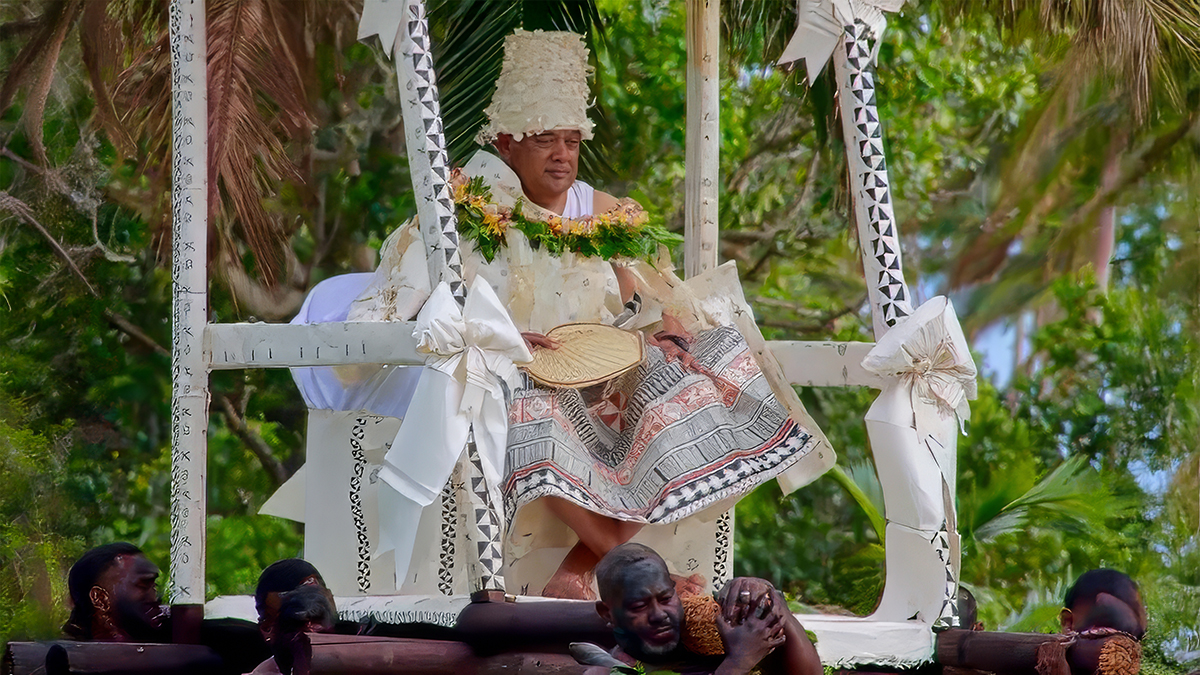A Fijian chief was recently installed. The ceremony lasted three days, but preparations took months.
Among the chief guests were the king and queen of Tonga and the Māori Queen of Aotearoa New Zealand. Church leaders, including Catholic Archbishop Peter Loy Chong, also participated.
Ratu Tevita Uluilakeba Mara, who spent 25 years in exile in Tonga, has now been installed as Tui Nayau, Tui Lau, and Sau ni Vanua O Lau.
A moment of significance for the Pacific
This news may not have rated a mention in around the world, but for the vanua—the country of Fiji—and the wider Moana, it is historic.
This chiefly title had been silenced for decades.
The last Prime Minister dissolved the Great Council of Chiefs, removing their institutional voice.
The current Prime Minister, Sitiveni Rabuka, has restored it.
For Fijians, the council is a vital symbol of identity and culture.
The power of ritual and memory
I only glimpsed parts of the installation, but the depth of ritual over 72 hours was striking.
As a liturgist, I know what goes into planning a one-hour liturgy.
Yet here, chants, meke (dances), and ceremonial actions unfolded seamlessly after more than two decades.
How did they remember?
Perhaps the question doesn’t apply. As Dr Ponipate Rokolekutu puts it: “The Vanua is kept alive through responsibility, through remembrance, through genealogies, and through kinship.”
No rulebook is needed—each person knows their role through shared memory and kinship.
A new starting point: talanoa and tradition
I first came to Fiji at the request of the Pacific Regional Seminary’s rector in Suva to lead a five-day liturgy workshop. Since then, I’ve supported the seminary and now the archdiocese as a liturgical consultant and educator.
This week, I will facilitate a gathering of leaders preparing for a parish-based liturgy workshop. Previously, I might have started with principles from the General Instruction of the Roman Missal.
But this is one of many workshops exploring liturgy and culture in Fiji. We will begin our talanoa (discussion) by reflecting on the traditional ceremonies witnessed during the week.
From there, we will continue the important task of integrating the richness of vanua—identity, land, people—into the Church’s liturgical celebrations.
Tradition and faith in harmony
St John Paul II’s words in Alice Springs (1986) remain timely: “You do not have to be people divided into two parts… as though an Aboriginal (Fijian) had to borrow the faith and life of Christianity, like a hat or a new pair of shoes.”
John Paul’s words offer a challenge, how can our liturgies reflect cultural identity so that all may fully participate?

- Carmel Pilcher RSJ, PhD is a Liturgy and Culture Consultant and Educator, Darug and Gundungura country.
- Flashes of Insight is an international publication. The editorial policy is that spelling reflects the country of origin.

